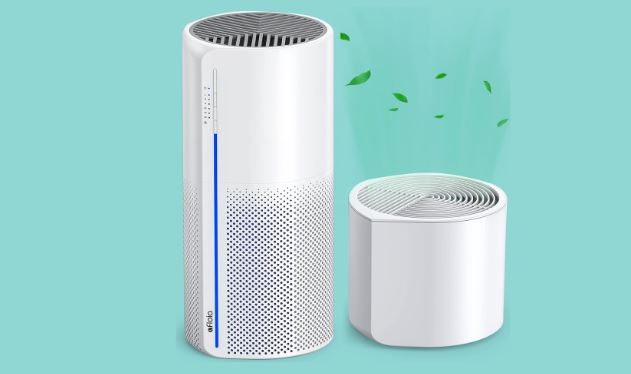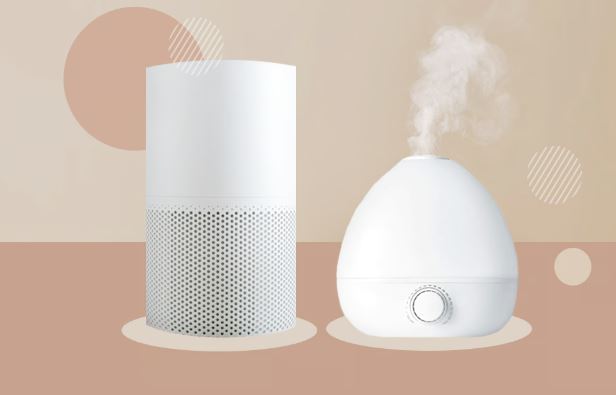The Air Up There: Elevate Your Home with an Air Purifier
Wiki Article
In an era of heightened health awareness, the air we breathe in has taken center stage for many people. With rising pollution levels and a deeper insight of the impacts of indoor air quality on our health, it's no surprise that the air purifier industry is experiencing tremendous growth.
Air purifiers are machines that eliminate airborne contaminants in a space, improving indoor air quality. They are ideal for people with allergies, asthma, or other respiratory issues as they can significantly lower the amount of allergens, pollutants, and irritants in the air. For those without respiratory concerns can take advantage of air purifiers, as they give added assurance and protect against airborne pathogens.
This comprehensive overview will dive deep into the intriguing world of air purification, examining their advantages, the array of models available, essential factors when choosing a purifier, and how to get the most out of your device. By the end, you should have a thorough grasp of air purifiers and be able to decide confidently about whether investing in one is the right choice for you and your family.

Decoding Air Pollutants and Their Influence on Health
To appreciate the value of air purifiers, it's key to comprehending the kinds of pollutants they target and the possible effects of exposure to these contaminants.
Indoor air pollutants can be broadly grouped into three main types:
- Airborne Particles: This includes solid and liquid droplets floating in the atmosphere. Examples include dust, smoke, pollen, pet dander, mold spores, and more. Particulate matter can cause respiratory issues and set off allergic responses.
- Volatile Organic Compounds (VOCs): VOCs are gases released by solids and liquids. Sources of VOCs include aerosol sprays, cleaning products, paints, and pesticides, among others. Exposure to VOCs can lead to eye, nose, throat irritation, headaches, and stomach discomfort.
- Biological Contaminants: These include various microorganisms, including bacteria, viruses, mold, and mildew. They can cause a spectrum of health concerns, from mild allergic reactions to severe infections.
The impact of these contaminants on human health can differ considerably. For those suffering from respiratory ailments or weakened immune systems, exposure to indoor air pollutants can lead to severe complications. Even those in good health, prolonged exposure over time to certain pollutants can impact respiratory health and overall well-being over time.

The Science Behind Air Purifiers
Air purifiers use a combination of physical and chemical processes to effectively eliminate contaminants. Understanding the fundamental processes employed by purifiers will help you understand their efficiency and the different types available on the market.
Here are the primary mechanisms and innovations used in air purifiers:
- The Power of Mechanical Filtration: This is the predominant technique used in air purifiers. It involves using filters to trap particles as air is passed through the filtration system. The filter composition can differ, each designed to target specific particle sizes and types. For example:
- Initial Defense: Pre-filters: These are usually the first line of defense, trapping bigger contaminants like dust and hair.
- HEPA Filters: The Gold Standard: HEPA filters are exceptionally efficient at capturing microscopic particles, including dust mites, pollen, bacteria, and viruses. To be labeled a true HEPA filter, it must capture at least 99.97% of particles as small as 0.3 microns.
- carbon filtration: These filters are designed to adsorb odors, VOCs, and gaseous pollutants.
- Ionizers: Charging Ahead: Ionizers use charged particles to create ions with a negative charge, which attach themselves to particles in the air. The charged particles then stick to nearby surfaces or are attracted back to the purifier.
- Ozone's Double-Edged Sword: Some air purifiers use ozone as a powerful cleaning agent. While effective, excessive ozone exposure carries risks so these types of purifiers should be used with care and only when no one is present.
- Ultraviolet (UV) Light: UV light can be used to neutralize bacteria, viruses, and mold spores. UV light is commonly paired with filtration to trap particles, and UV light provides an extra layer of protection against biological hazards.
The Ultimate Air Purifier Guide
With a plethora of options available, selecting the ideal air purification system can be a daunting task. It's important to consider multiple factors to ensure you make the right choice for your particular needs and room size.
Here are some key considerations:
- Sizing Up the Room: Air purifiers are typically rated for specific room sizes, so it's important to choose a model that can efficiently purify the air in the designated space. Most purifiers will list a maximum room size or a Clean Air Delivery Rate (CADR), which indicates the volume of filtered air delivered per minute.
- Targeted Pollutants: Identify the types of pollutants you want to target. If you suffer from allergies, look for a purifier with a true HEPA filter. For reducing unwanted smells, consider a model with a carbon-based filter. If you're concerned about bacteria and viruses, a purifier with UV light technology might be best.
- Quiet Operation: Air purifiers can produce varying levels of noise, so if you plan to use it in a bedroom or quiet space, look for models with a low-noise or sleep mode.
- Long-term Considerations: Consider the regular maintenance and associated costs of the purifier. HEPA filters, for example, typically need to be replaced every 6-12 months, depending on use and environmental factors. Remember to budget for filter replacements when making your choice.
- Smart Innovations: Many purifiers offer intelligent features like automatic modes, air quality monitoring, and wireless control, allowing wireless control and real-time data. These features can make your purifier more user-friendly and efficient.
Maximizing the Benefits of Your Air Purifier
Once you've chosen and set up your air purifier, there are several things you can do to ensure it operates at peak performance and delivers the optimal results:
- Place it in the Right Location: Position your purifier in an open area, away from walls and furniture, to ensure effective airflow. Avoid placing it near open windows or doorways as drafts can impact its efficiency.
- Keep it Running: For the best results, it's recommended to run your purifier regularly. Many models have low-energy settings or automatic modes that respond to air quality changes, so you can maintain fresh air without excessive energy costs.
- Maintain the Filters: Regularly check and replace filters as recommended by the manufacturer. Over time, filters become clogged with particles, reducing the purifier's efficiency. Schedule filter replacements so you don't forget.
- Reducing Indoor Contaminants: Alongside using an air purifier, take steps to minimize indoor air pollutants. This could include regularly vacuuming and dusting, using natural cleaning products, and minimizing the use of strong chemicals or aerosols. Report this wiki page